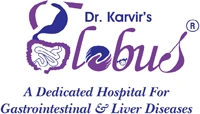PEG(Percutaneous Endoscopic Gastrostomy) Tube Insertion
Percutaneous Endoscopic Gastrostomy is a procedure used to provide enteral feeding to critical patients. This is done by inserting a flexible feeding tube into the stomach through the abdominal wall. All the fluids, nutrition, medication, etc. are directly put into the stomach through this tube and the mouth and esophagus are completely bypassed.
How is Percutaneous endoscopic gastronomy performed?
The doctor creates a small opening through the skin of the upper abdomen. This is done using a lighted endoscope and the doctor places and secures a feeding tube inside the stomach. The whole procedure is carried out under local anesthesia and the patient is administered with a sedative to relax. The patient is usually sent home the same day or maximum by the next day.
Who requires PEG?>s
PEG is performed on patients who are unable to take adequate nutrition through the mouth. They may have difficulty in swallowing, loss of appetite, or any other cause.
Are there any complications that arise from PEG placement?
Some patients may feel pain at the PEG site or leakage of contents of the stomach at the PEG site. Complications may also occur due to malfunctioning or dislodgement of the PEG tube. This may result in infection at the PEG site, aspiration, bleeding, and perforation.
How long can these tubes be lodged?
PEG tubes can last for months or years at a stretch. However, they may need to be replaced from time to time as they become clogged or break down. The tube can easily be replaced or removed by your doctor without using any sedative or anesthesia. The doctor may use endoscopy to replace or remove the tube and insert a new one. He may let the site close if no replacement is required. These PEG sites close quickly on removing the tube.
Patients who are critically ill are at a greater risk of malnutrition, especially because of their underlying chronic illness, loss of appetite, and trauma. Malnutrition is the leading cause of high mortality rate in such patients and needs to be addressed promptly. Percutaneous endoscopic gastronomy provides an effective and safe method of providing nutrition to such patients.
PEG tube insertion is common in patients with neurologic indications such as dementia, stroke, Parkinson’s disease, cerebral palsy, multiple sclerosis, encephalitis, meningitis, Huntington’s disease among others. PEG tube placement is increasingly being used due to its efficacy and safety.
To know more about Peg tube insertion treatment in Mumbai book an appointment with Globus Gastroenterology Hospital call on 98331 06104, 98331 87118 or visit our hospital at 201, Second Floor, Kothari Milestone Mall, Near Natraj Market, S.V Road, Malad West - 400064. For hospital directions click here.


